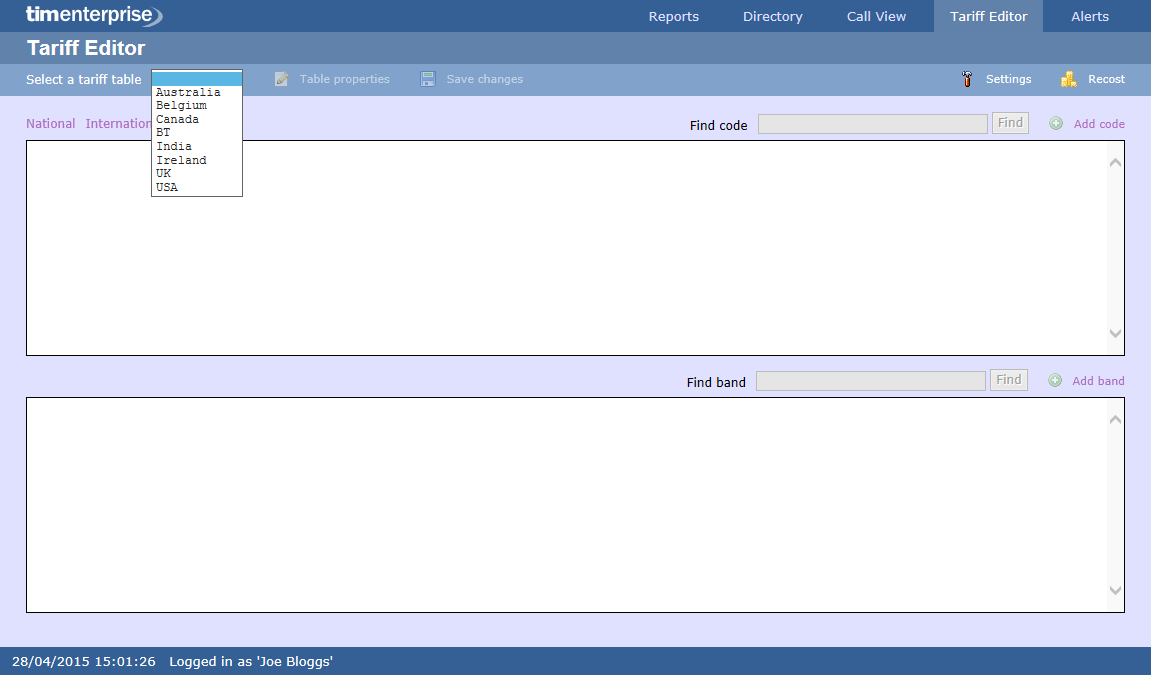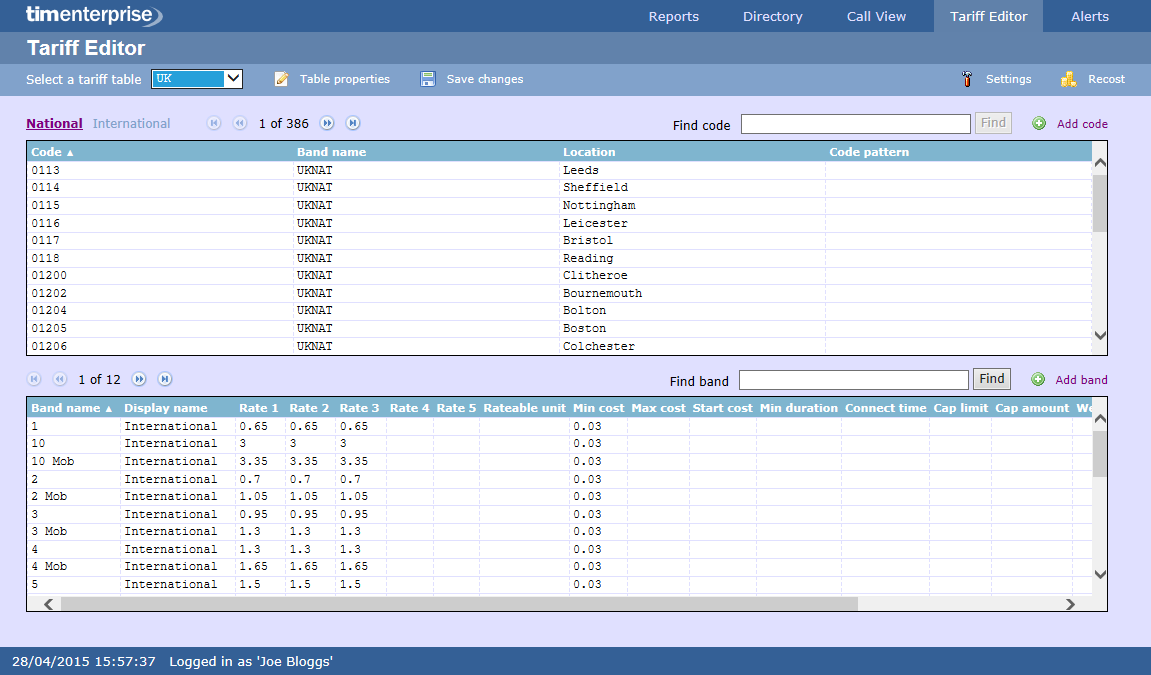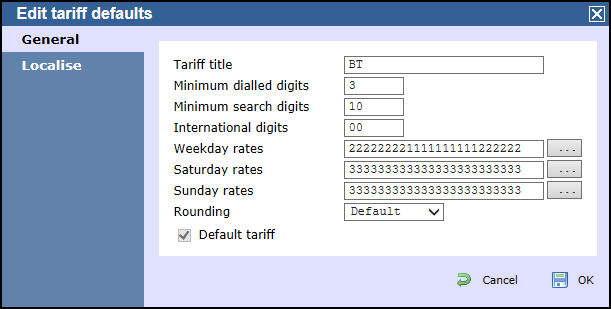General properties
Accessing the tariff editor
To access the tariff table, click on the tab from the menu bar, as shown below:

Selecting a tariff table
To select a tariff table, expand the drop-down list on the left-hand side of the screen and choose from the available options, as shown below:

Once a tariff has been selected, the following screen will be displayed:

Tariff properties
To configure the general properties of your tariff table, click on the button, as shown below:

A new window will open where you can configure the properties of your tariff table. Each field in this window is described in the table below:

| Field name | Description |
|---|---|
| Tariff title | The name of the tariff table |
| Minimum dialled digits | The minimum number of dialled digits required for the call to be logged |
| Minimum search digits | The minimum number of search digits required to start allocating a charge to a call. TIM Enterprise starts from 10 digits and works backwards in order to find the closest tariff match |
| International digits | The digits used to dial internationally, e.g. all international calls made from UK begin with 00 |
| Weekday rates | The weekday rates you want to apply to calls for each hour of the day. For example, in the table below rate 2 applies from midnight to 7:59 and from 18:00 to 23:59, and rate 1 applies from 8:00 to 17:59
To see the rates in more detail, click on the button to expand, as shown below: 
|
| Saturday rates | The Saturday rates you want to apply to calls for each hour of the day. For example, in the table below rate 3 applies at all times
To see the rates in more detail, click on the button to expand, as shown below: 
|
| Sunday rates | The Sunday rates you want to apply to calls for each hour of the day. For example, in the table below rate 3 applies at all times
To see the rates in more detail, click on the button to expand, as shown below: 
|
Rounding | This option allows you to select whether you want to round decimal places up or down
|